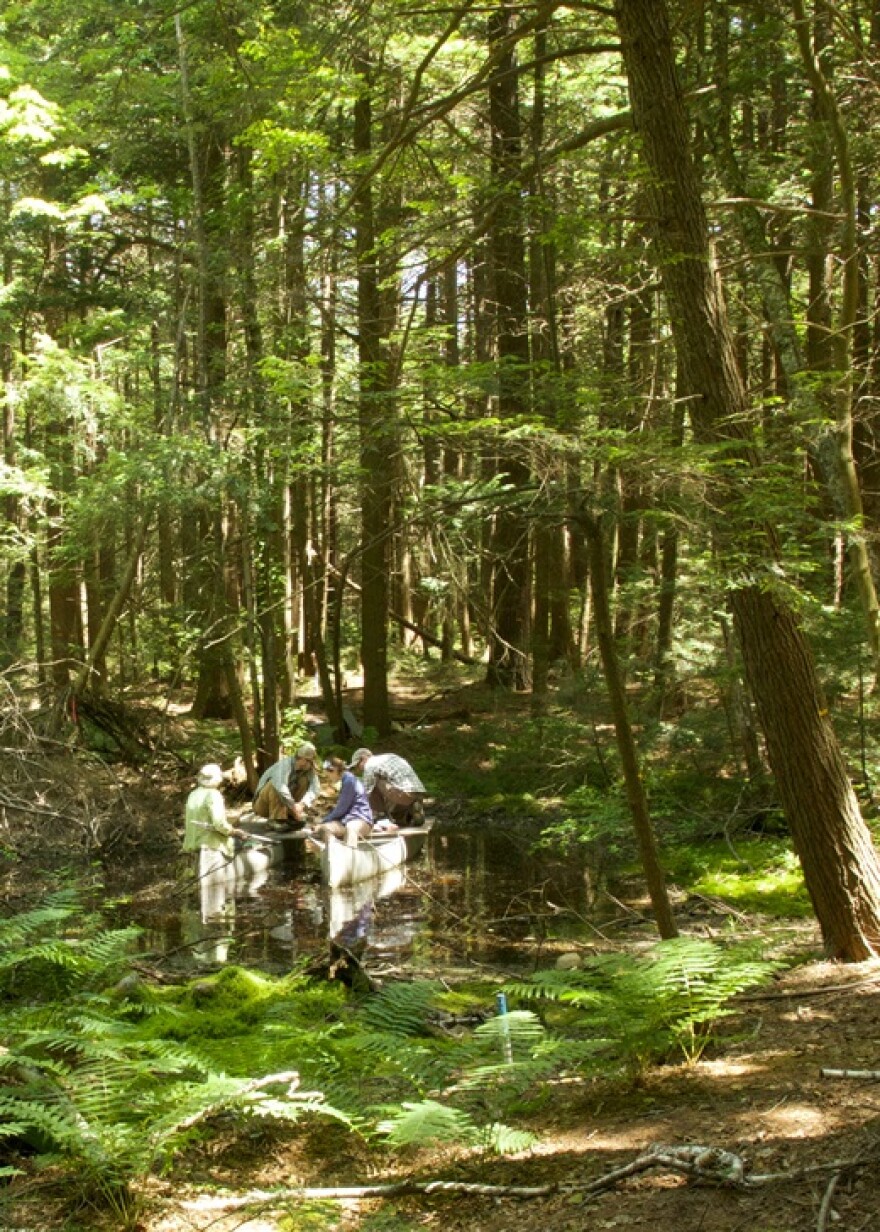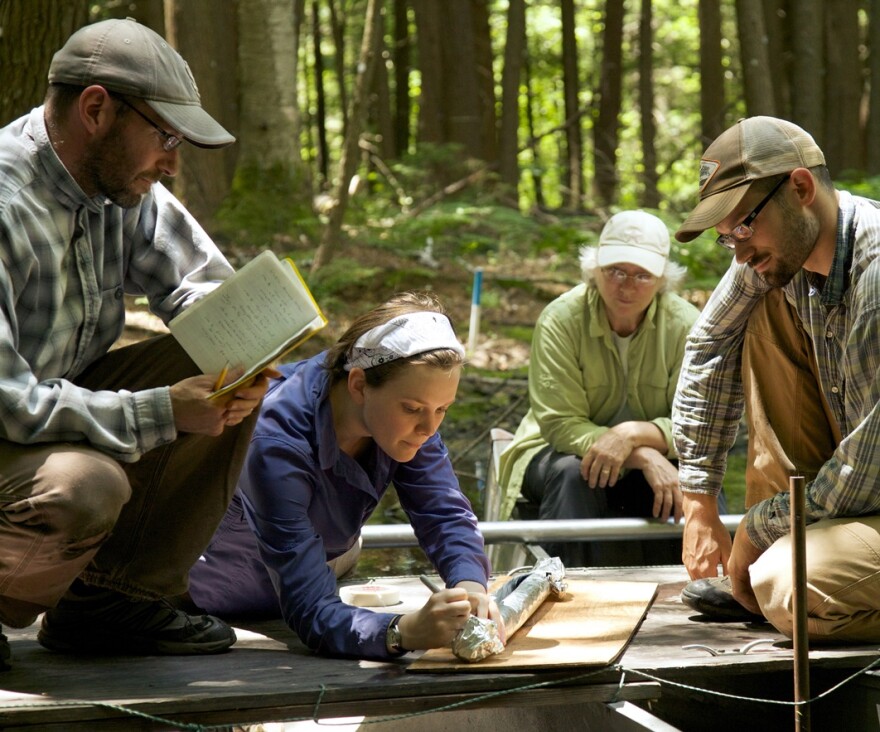One of those time honored New Year’s traditions is taking stock. Taking stock of the past year, or the past 13,000. When you consider New Hampshire was covered with a mile thick ice sheet 13,000 years ago, we’ve come a long way, baby! 12,000 years ago, we were still tundra. Trees don’t reappear in these parts until about 8,000 years ago: namely spruce, birch and poplars. And it wasn’t until about 4,000 years ago, that what we would now recognize as “New Hampshire forests” begin to reappear.
We chose that word – “reappear” – carefully. As with birds, tree ranges are constantly changing as climate changes. It’s just that their time scale is so much broader than ours that can’t witness in real time. We often see trees as static because we can only observe what we see in our lifespan. So if a tree doesn’t move for 70 years, we categorize it with statues. But successive generations of trees can, in fact, cover a lot of ground.
And we know all this thanks to the glorious world of pollen cores. And when it comes to pollen cores, the guy you want to talk to is William Wyatt Oswald, he’s a “paleo-ecologist” and Associate Professor at Emerson College (and author). As he explains, “my own esoteric specialty is analyzing pollen grain.” And he analyzes pollen by examining pollen cores.
Pollen cores are a bit like tree cores – you send in an auger, and pull out a plug. Only pollen cores are pulled from bogs, or lakes and instead of wood are composed mostly of mud. Bogs and lakes a great places to pull a core, because the sheet of water sitting on top is going to collect data in the form of pollen, ash, dust. That data then precipitates down to the bottom of the basin and lie there in layers. And the remarkable thing is the durability of these tiny grains of pollen. Oswald says, “it doesn’t degrade over millennia, especially at the bottom of lakes.”

Oswald explained how he and his team set up the corer on a lake or pond and lower a long metal tube into the sediment at the bottom. The plug they pull out is about two-and-a-half inches in diameter in one-meter lengths. The core itself is, “kind of like think pudding in terms of its consistency and appearance.” Pulling it out of the sediment is just the beginning. When Oswald gets it back to his lab, “we isolate the pollen from the rest of the sediment by using a series of steps including a bunch of harsh chemical steps, like Hydrochloric Acid. So that washes away all the inorganic stuff and leaves the pollen behind.”
After cleaning the cores, he slices them up into 1-centimeter think intervals for analysis. “By radio-carbon dating the sediment we can figure out what depth corresponds to what age. And then we analyze all sorts of different stuff in the mud to reconstruct both past environmental and ecological changes.” More specifically, it’s how we know what plants were around at what time in history.
Pollen grains have distinctive shapes, pine pollen doesn’t look anything like chestnut pollen. Oswald said while he can sometimes identify species of plants, often he can at least narrow it to the family or genus. Then you do a little deductive reasoning, “some plants produce more pollen than others. Pines make a ton of pollen compared to some other species. And so when you’re interpreting the pollen record you have to keep in mind that those types are over-represented. On the flip side, Sugar maple doesn’t make much pollen, so it’s a relatively low pollen producer and it’s under-represented.”
Looking at the pollen record, we can read when different trees disappeared or returned to the post-glacial landscape. “The trees that we think of being New England Species, like American Beech and Eastern Hemlock, they would have camped out during the last ice age in Tennessee and Kentucky, but over time they made their way back.” The time is takes them to affect this migration is generations, as opposed to the mere decades in which it happens with birds.
And most interesting is that the pollen show us that the trees are still moving! “These plant communities are ephemeral through time,” says Oswald. “These groups of species aren’t going to necessarily hang together going forward, just as they haven’t hung together in the past.” So much to be learned from a few meters of mud.









